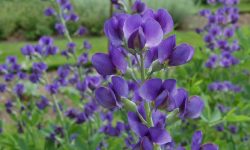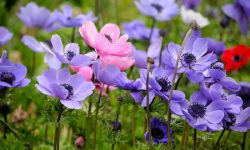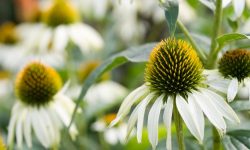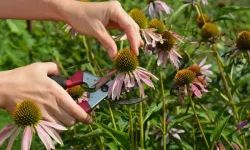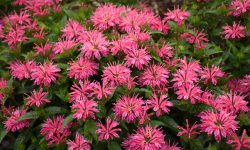Fuchsia captivates gardeners with its vibrant colors and elegant, hanging flowers. Originating from exotic regions, this stunning plant brings a touch of tropical beauty to gardens worldwide. Its unique shape and bright hues make it a favorite for both containers and garden beds.
Beyond its beauty, fuchsia holds a fascinating history rooted in exploration and discovery. From remote mountain forests to Victorian greenhouses, its journey reveals a story of passion, science, and endless fascination. Dive into the exotic origins of fuchsia and uncover why it remains a timeless garden treasure.
The Botanical Roots of Fuchsia
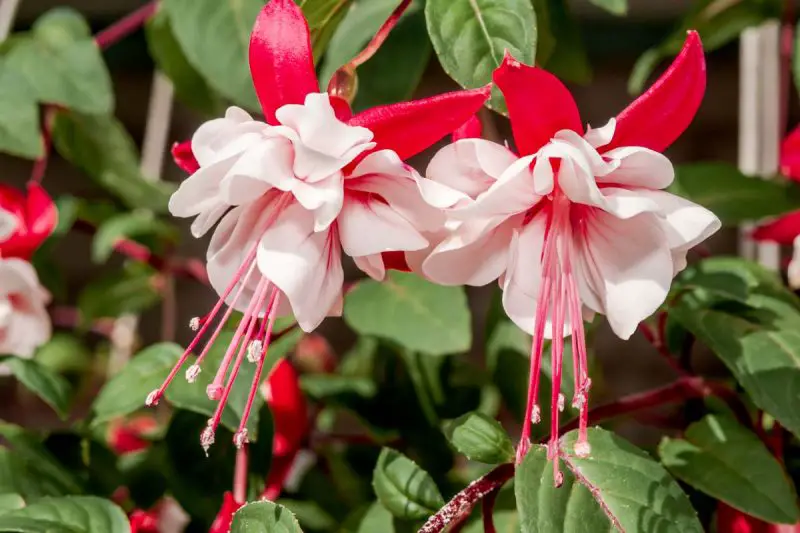
Fuchsia’s story begins in the misty highlands and subtropical regions of Central and South America, where it thrives along forest edges, mountain slopes, and cloud-covered valleys. These exotic landscapes, rich in biodiversity, shaped fuchsia into the uniquely vibrant and graceful plant we cherish today. With their pendulous blossoms and vivid color palettes, wild fuchsias evolved to attract hummingbirds, forming a mutually beneficial relationship that helped ensure their pollination and survival.
Botanically, fuchsias belong to the family Onagraceae and encompass over 100 naturally occurring species. Their native environments—characterized by cool nights, moist air, and well-drained soils—provided ideal growing conditions that allowed these plants to flourish. Over time, the adaptation to diverse microclimates gave rise to a wide range of forms, from low-growing groundcovers to woody shrubs and even small trees, each with distinctive leaf shapes, floral structures, and growth habits.
Understanding the plant’s origins offers valuable insight into how to care for it in modern gardens. By mimicking elements of its native habitat, such as providing dappled light and regular moisture, gardeners can unlock the full potential of fuchsia’s breathtaking blooms. This deep botanical history is more than just a scientific background—it’s a celebration of nature’s artistry, carried into your backyard.
The Discovery and Naming of Fuchsia
The story of fuchsia begins in the late 1600s. A French monk and botanist named Charles Plumier discovered the plant during his expedition to the Caribbean, specifically the island of Hispaniola. Plumier was exploring the rich plant life of the New World when he came across a unique flowering shrub with vibrant, pendulous blooms.
Captivated by its beauty, he named the plant Fuchsia triphylla in honor of the famous German botanist Leonhart Fuchs. This act of naming not only preserved the legacy of a great scientist but also marked the official introduction of the genus Fuchsia into botanical literature. Plumier’s detailed drawings and descriptions allowed scientists in Europe to identify and study the plant further.
Fuchsia quickly gained popularity for its unusual shape and vivid color palette. Its discovery sparked a surge of botanical interest and led to more expeditions aimed at locating related species. The name “fuchsia” became widely recognized and remains a tribute to its European botanical roots and its exotic tropical origin.
Today, the name Fuchsia not only refers to the plant but also defines a distinct color inspired by the original blooms discovered centuries ago. The plant’s discovery and naming laid the foundation for centuries of cultivation, admiration, and continued fascination.
Expansion Through Exploration and Cultivation
After the discovery of fuchsia in the late 17th century, explorers and botanists quickly began introducing it to Europe and beyond. Its vivid colors and exotic charm made it a favorite among plant collectors. Ships traveling between continents brought back live specimens and seeds, helping the flower spread far from its native regions.
Gardeners across Europe embraced fuchsia for its beauty and adaptability. As interest grew, nurseries began experimenting with propagation and hybridization. Over time, they developed new varieties that could thrive in different climates. The plant’s ability to grow in containers, hanging baskets, and garden beds made it a versatile choice for home gardeners.
Thanks to its resilience and popularity, fuchsia became a garden staple in many temperate regions. By the 19th century, it was widely cultivated and loved across North America, Australia, and parts of Asia. Its spread was not just about beauty but also about experimentation and adaptation, turning a tropical native into a global garden favorite.
Fuchsia’s Spread Across the Globe
Once European botanists and horticulturists recognized the ornamental value of fuchsias, their spread became rapid and widespread. During the 18th and 19th centuries, these striking plants were collected from their native habitats and introduced to European greenhouses and botanical gardens. Their adaptability and vibrant blooms quickly captured the interest of plant enthusiasts across the continent.
British and French gardeners played a significant role in hybridizing fuchsias, creating new cultivars that could tolerate a wider range of climates. This innovation helped the plant transition from a tropical curiosity to a garden staple in temperate zones. By the mid-1800s, fuchsias had made their way into private gardens and public displays throughout Europe.
With the rise of global plant trade, fuchsias were soon introduced to North America, Australia, and parts of Asia. Their versatility and showy appearance made them ideal for hanging baskets, borders, and shaded garden beds. Today, fuchsias are beloved by gardeners worldwide and have become a symbol of ornamental beauty in both urban and rural settings.
Unique Traits from Their Native Environments
Fuchsias have evolved to thrive in cool, moist environments with high humidity and dappled shade, a reflection of their native habitats in Central and South America and New Zealand. These regions provide rich, organic soil, consistent rainfall, and mild temperatures, shaping fuchsias into resilient, shade-tolerant plants with graceful, pendulous flowers.
The long tubular shape of fuchsia blossoms is adapted to attract hummingbirds and long-tongued insects, their primary pollinators in the wild. Many native species produce vivid red, purple, or pink flowers that stand out in forested understories, where light is limited. Their ability to tolerate poor light and variable moisture levels has made them especially versatile for gardens in temperate zones.
In their native cloud forests, fuchsias developed thick, fleshy leaves and woody stems to manage moisture retention and support growth in steep, rugged terrain. These traits contribute to their success in containers, hanging baskets, and woodland gardens today. Their environmental adaptability remains one of the reasons fuchsias continue to be beloved by gardeners worldwide.
Cultural and Historical Significance
Fuchsia has been admired in many cultures for centuries. People value it not only for its striking beauty but also for its rich symbolism. In Victorian England, fuchsia symbolized elegance and refined taste. It was commonly featured in formal gardens and decorative displays. Its vibrant, hanging flowers inspired embroidery, porcelain art, and women’s fashion accessories during the 19th century.
In Central and South America, where many wild fuchsia species come from, indigenous peoples respected the plant for its strength and bright presence in mountain landscapes. Some communities used fuchsia flowers in traditional rituals and celebrations as natural decorations.
When European explorers brought fuchsia back to their homelands, its popularity grew rapidly in France, Germany, and the British Isles. Its beauty and ability to hybridize encouraged widespread cultivation. Fuchsia became a favorite in botanical gardens and public parks. Today, horticultural societies and flower shows continue to honor rare and heirloom fuchsia varieties, preserving its lasting legacy.
Evolution of Modern Cultivars
Modern fuchsia cultivars have developed through centuries of careful breeding by gardeners and horticulturists. Early efforts focused on improving flower size, shape, and color intensity. By crossing wild species, breeders combined desirable traits to create plants with larger, more vibrant blooms.
Hybridization surged during the Victorian era, with gardeners producing varieties featuring unique flower forms like double blooms and cascading petals. Many popular cultivars today trace their origins to this time.
Today, thousands of fuchsia cultivars exist, offering diverse colors, shapes, and growth habits. These modern plants adapt well to various climates and garden styles. Breeders also work to improve disease resistance and bloom longevity, keeping fuchsias a beloved garden favorite worldwide.
How Their Origins Influence Garden Success
Understanding fuchsia’s origins helps gardeners grow them well. Fuchsias come from Central and South America, New Zealand, and Tahiti. They evolved in cool, moist, shaded places with well-drained soil. This explains why they prefer partial shade and moist, but not soggy, soil.
Mimicking their natural habitat leads to better growth. Protect fuchsias from strong afternoon sun and harsh winds. Keep humidity moderate and soil well-drained. Many fuchsias are sensitive to frost because of their tropical roots. In colder areas, protect them in winter or grow as annuals.
By matching care to their native conditions, fuchsias grow strong and healthy. They produce plenty of flowers and lush leaves year after year.
Preserving Wild Fuchsia Species
Wild fuchsia species face growing threats. Habitat loss, climate change, and human actions shrink their native lands. Forests in Central and South America are disappearing. Temperatures are changing.
Conservationists act to protect these plants. They preserve habitats and store seeds. They work with local communities to save forests. Botanical gardens collect seeds from rare fuchsias. This helps future research and replanting.
Scientists study wild fuchsias to learn about their strength. This knowledge aids breeders in making hardier garden plants. Protecting wild species keeps genetic diversity alive. This is vital for fuchsia’s future.
Saving wild fuchsias means more than saving flowers. It protects ecosystems and biodiversity. It ensures garden favorites thrive for generations ahead.
The Magic Behind Fuchsia’s Name and Colors
The name “Fuchsia” pays tribute to Leonhart Fuchs, a renowned 16th-century German botanist whose work laid important foundations for plant science. When French botanist Charles Plumier discovered this striking plant in the Caribbean during the late 1600s, he chose to honor Fuchs by naming the genus after him. This connection ties the vibrant flower to a rich history of botanical exploration and discovery.
Fuchsia’s vivid colors—ranging from deep purples and bright pinks to fiery reds—are not just beautiful but serve a vital purpose in nature. These bold hues evolved to attract hummingbirds, the primary pollinators of fuchsia species in their native habitats. The flowers’ elegant, pendulous shapes combined with their brilliant colors create a captivating display that draws pollinators and gardeners alike. This magical blend of history, science, and natural beauty makes fuchsia a timeless favorite in gardens around the world.
FAQ About the Origins and History of Fuchsia
Where do fuchsia plants originally come from?
Fuchsia plants are native to Central and South America, with some species also found in New Zealand and Tahiti. The first documented discovery of a fuchsia was made in the late 17th century in the Caribbean by French botanist Charles Plumier, who found Fuchsia triphylla on the island of Hispaniola. These plants thrive in high-altitude tropical and subtropical regions with mild climates and high humidity.
How did fuchsia become popular in Europe and North America?
Fuchsia was introduced to Europe in the 18th century and quickly gained popularity due to its vibrant flowers and graceful form. European botanists and plant hunters brought back various species from expeditions to South America and New Zealand. By the Victorian era, fuchsias had become a fashionable plant for greenhouses and garden borders in England. Their popularity spread to North America through colonial and botanical exchanges.
Are there different types of fuchsia around the world?
Yes, there are over 100 known species of fuchsia and thousands of cultivars. Species are classified into two main types: hardy fuchsias, which can survive milder winters, and tender fuchsias, which require protection from frost. Native species vary greatly in size, flower shape, and growth habit, from low-growing shrubs to small trees, depending on their native environments.
Why are fuchsias associated with exotic gardens?
Fuchsias are often considered exotic due to their tropical origins, pendulous flowers, and striking color combinations of pink, purple, red, and white. Their lush appearance and cascading blooms make them ideal for hanging baskets, woodland borders, and ornamental gardens, especially those aiming to capture a lush, tropical aesthetic.
Can I grow fuchsia plants at home, and do they need a specific climate?
Yes, fuchsias can be grown at home in containers, hanging baskets, or garden beds. They prefer cool, moist environments and do best in partial shade with well-draining soil. In colder regions, tender varieties should be overwintered indoors or treated as annuals. Regular watering, protection from extreme heat or frost, and light pruning will help them thrive in most temperate climates.
Conclusion: A Global Flower with Deep Roots
Fuchsia’s journey from the misty forests of Central and South America to gardens around the world is a beautiful story of nature’s artistry and human curiosity. Its vibrant colors and elegant blooms bring life and charm to any space, enchanting gardeners and visitors alike. By growing fuchsia, you invite not just a stunning plant but a living legacy full of history, resilience, and wonder. This timeless beauty continues to inspire, reminding us of the magic found in every blossom.

